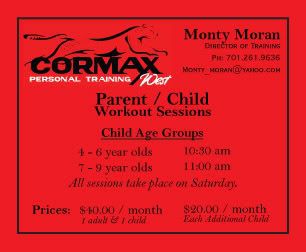Many fitness professionals and medical doctors prescribe low to moderate intensity aerobic training (cardio) to people who are trying to prevent heart disease or lose weight. And usually, the recommendations parallel the common statement, “perform 30-60 minutes of steady pace cardio 3-5 times per week maintaining your heart rate at a moderate level”. What is the reasoning? Simply because it’s deemed as a safe start for extremely de-conditioned or extremely overweight individuals. This workout is not difficult; it’s attainable- meaning the odds of “staying with it” are good and a step above the completely sedentary lifestyle. Plus, prescribing this fitness regime covers the professionals’ butts. Who wants to be responsible for someone collapsing because the fitness program they recommended was too intense?
Fast-forward to you being able to achieve steady state cardio workouts (i.e. walk or jog for 20 minutes). I think 30-60 minutes is a little excessive without feeling like the “hamster on the wheel” doing endless hours of boring cardio. So what’s the next step? Consider some recent scientific research that indicates that steady pace endurance cardio work may not be all it’s cracked up to be.
First, realize that our bodies are designed to perform physical activity in bursts of exertion followed by recovery, or stop-and-go movement instead of steady state movement. Recent research is suggesting that physical variability is one of the most important aspects to consider in your training. This tendency can be seen throughout nature as animals almost always demonstrate stop-and-go motion instead of steady state motion. In fact, humans are the only creatures in nature that attempt to do “endurance” type physical activities. Most competitive sports (with the exception of endurance running or cycling) are also based on stop-and-go movement or short bursts of exertion followed by recovery. To examine an example of the different effects of endurance or steady state training versus stop-and-go training, consider the physiques of marathoners versus sprinters. Most sprinters carry a physique that is very lean, muscular, and powerful looking, while the typical dedicated marathoner is more often emaciated and sickly looking. Now which would you rather resemble?
It’s not about aesthetics entirely either, the internal effect of various forms of exercise on our body can make all the difference when we realize what’s really happening. Scientists have known that excessive steady state endurance exercise (different for everyone, but sometimes defined as greater than 60 minutes per session most days of the week) increases free radical production in the body, can degenerate joints, reduces immune function, causes muscle wasting, and can cause a pro-inflammatory response in the body that can potentially lead to chronic diseases. On the other hand, highly variable intermittent training has been linked to increased anti-oxidant production in the body and an anti-inflammatory response, a more efficient nitric oxide response (which can encourage a healthy cardiovascular system), and an increased metabolic rate response (which can assist with weight loss). Furthermore, steady state endurance training only trains the heart at one specific heart rate range and doesn’t train it to respond to various every day stressors. On the other hand, highly variable intermittent training teaches the heart to respond to and recover from a variety of demands making it less likely to fail when you need it. Think about it this way -- Exercise that trains your heart to rapidly increase and rapidly decrease will make your heart more capable of handling everyday stress. Stress can cause your blood pressure and heart rate to increase rapidly. Steady state jogging and other endurance training does not train your heart to be able to handle rapid changes in heart rate or blood pressure. Steady state exercise only trains the heart at one specific heart rate, so you don’t get the benefit of training your entire heart rate range.
The important aspect of variable intermittent training that makes it superior over steady state cardio is the recovery period in between bursts of exertion. That recovery period is crucially important for the body to elicit a healthy response to an exercise stimulus. Another benefit of variable intermittent training is that it is much more interesting and has lower drop-out rates than long boring steady state cardio programs.
To summarize, some of the potential benefits of variable intermittent training compared to steady state endurance training are as follows: improved cardiovascular health, increased anti-oxidant protection, improved immune function, reduced risk for joint wear and tear, reduced muscle wasting, increased residual metabolic rate following exercise, and an increased capacity for the heart to handle life’s every day stressors.
There are many ways you can reap the benefits of stop-and-go or variable intensity physical training. One of the absolute most effective forms of variable intensity training to really reduce body fat and bring out serious muscular definition is performing wind sprints or hill sprints. Also, most competitive sports such as football, basketball, racquetball, tennis, hockey, etc. are naturally comprised of highly variable stop-and-go motion. In addition, weight training naturally incorporates short bursts of exertion followed by recovery periods. High intensity interval training (varying between high and low intensity intervals on any piece of cardio equipment) is yet another training method that utilizes exertion and recovery periods.
For example, an interval training session on the treadmill could look something like this:
Warm-up for 3-4 minutes at a fast walk at least 1.5 incline
Interval 1 - run at 8.0 mi/hr with the incline at 10 for 20 seconds
Interval 2 - walk at 3.0 mi/hr with the incline at 3 for 1.5 minutes
Interval 3 - run at 10.0 mi/hr with the incline at 10 for 10 seconds
Interval 4 - walk at 3.0 mi/hr with the incline at 3 for 1.5 minutes
Repeat those 4 intervals 4 times for a very intense 15 to 20-minute workout.
Remember, the idea is to train your body at highly variable intensity rates for the majority of your workouts to get the most beneficial response in terms of heart health, fat loss, and muscle maintenance.





